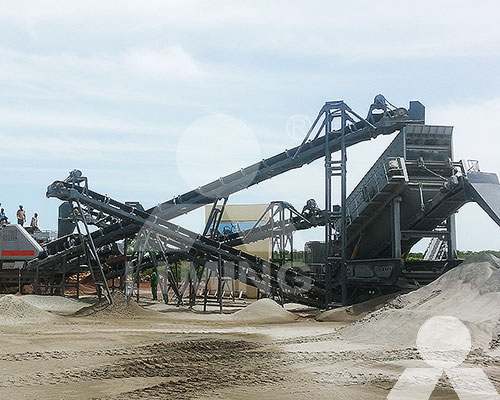Sand Making
Last Updated :2023-07-24 Views:342
120 tph river stone sand making line in Ulan-Ude Russia
120 tph river stone sand making line in Ulan-Ude, Russia, would likely involve the process of crushing river stones into various sizes and then using the crushed material to produce high-quality sand suitable for construction and other applications.

Here’s a general outline of the components and processes that might be involved in setting up such a sand making line:
- Feeding: Large river stones would be transported to the site and fed into the primary crusher. A vibrating feeder would likely be used to regulate the flow of stones into the crushing equipment.
- Primary Crushing: The primary crusher, usually a jaw crusher or a gyratory crusher, would break down the large river stones into smaller pieces. The size of the crushed stones will depend on the specific requirements of the final product.
- Secondary Crushing: The smaller stones from the primary crusher will then be further reduced in size using a secondary crusher, such as a cone crusher or an impact crusher. This step ensures that the sand produced has the right particle size distribution.
- Screening: After the secondary crushing stage, the crushed stones would be screened to separate them into different sizes. The desired sand size would be sent for further processing, while oversized or undersized materials might be sent back for additional crushing.
- Sand Making: The screened crushed stones of the appropriate size would be sent to the sand making machine. This machine uses special techniques to produce high-quality sand from the coarse aggregates.
- Washing and Grading: The sand might be washed to remove any impurities and achieve the desired cleanliness. Additionally, it could be graded to ensure a consistent particle size.
- Stockpiling: The final product, the manufactured sand, would be stockpiled and stored for distribution and sale. Adequate measures should be taken to prevent contamination and ensure the sand remains in good condition.
- Water Recycling System: Depending on the location and environmental regulations, a water recycling system might be incorporated to minimize water consumption and reduce environmental impact.
- Dust Control System: To minimize dust emissions during the crushing and sand-making process, a dust control system should be installed.
- Power Supply and Automation: A stable and reliable power supply is essential for the smooth operation of the sand making line. Automation systems can also help optimize the production process and monitor equipment performance.
- Environmental Considerations: It’s essential to adhere to environmental regulations and implement measures to mitigate any potential negative impacts on the surrounding environment.
Setting up a sand making line of this scale requires careful planning, engineering expertise, and a dedicated team to oversee the construction and operation. It’s crucial to work with local authorities, suppliers, and environmental agencies to ensure a successful and sustainable project.









